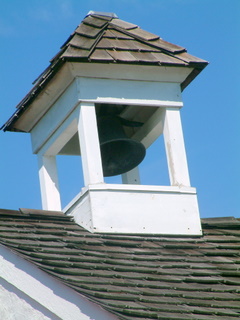
About Us
IMPORTANT NOTICE: The Historical Society of Whitpain merged with the Wissahickon Valley Historical Society on 11/16/2014. Please refer to the WVHS website for more information.
Mission Statement"The object of this Society shall be to develop a greater interest, knowledge and support of the history of Whitpain Township and to preserve, acquire and restore memorials, historical buildings and landmarks in said township.
"In order to maintain our tax exempt status, no individual member or group shall use the name The Historical Society of Whitpain for personal profit. All profits from money making projects where public support is solicited must be used for the purposes as stated."
-Mission Statement of The Historical Society of Whitpain as taken from the BylawsThe Historical Society of Whitpain is a registered, not-for-profit 501c(3) organization.
All donations of any kind are tax-deductible.
The Historical Society of Whitpain meets at the historic Boxwood House, located at the intersection of Skippack Pike and Cathcart Road. Built and added to in three different periods, what is now the kitchen is thought to be the original farmhouse, constructed circa 1731. The next addition of three stories, facing Skippack Pike was built in 1760. The newest section, built around 1800, has a lovely fireplace in the living room where the Society holds its meetings. Purchased in 1945 and extensively renovated by the Olsen family, Boxwood was later purchased by Whitpain Township and ultimately rented to The Historical Society of Whitpain. Volunteers from the Society have labored many hours renovating the interior of this 18th century house. It now also houses a large collection of local Whitpain historical memorabilia, including much information about the Strassburger family, Normandy Farms and Clara Beck, a noted local historian, genealogist and journalist. The archives also contain countless photographs, artifacts and documents related to early American education in Pennsylvania, particularly those concerning the Franklinville School.
Society meetings, which offer a wide variety of topics of historical interest are held on the last Tuesday of the month, March through November, and are open to the public.
In 1858 when the Franklinville School was built, it was surrounded by farmland. Today it sits on a very busy road surrounded by luxury homes. It is the last of six one-room public schools originally built in Whitpain Township.
It is a simple building with walls of fieldstone which are covered with plaster and whitewashed. On its cedar-shingled pointed roof sits a small bell tower. A covered porch extends almost the full width of the front of the building. There is a front and a back door. Considerable light and air can enter through its ten windows. The schoolís water pump, although now inoperable still stands nearby outside.
The interior, also plain, is comprised of a main room 25 feet wide by 32 feet long, in the center of which stands a coal burning stove. The walls are white plaster and the floor is made of wooden planks. In the right front corner of the classroom is a platform with a table used by the teacher as a desk. In the corner of the teacherís platform stands a stool with a dunce cap. The left front wall has a blackboard, not made of slate, but a sheet of wood painted with authentic blackboard paint as it would have been in the nineteenth century.
Although the Franklinville School went through periods of disuse, it was never structurally altered. It functioned as a public school from 1858 to 1916 when it was closed. It was resurrected as a private school in the 1920's for Peter Strassburger, son of Ralph Beaver Strassburger who owned the Normandy Farms complex. Other children from Normandy Farms were also taught there. When Peter grew older, the school was closed and was unused as a school. Ralph Beaver Strassburger, who was publisher of the Norristown Times Herald newspaper did use the schoolhouse and its grounds for picnics, to show movies and to host gatherings of civic groups, the most notable being the Fifty Year Club of Montgomery County, an organization comprised of residents of Montgomery County 50 years of age and older. Although it sat unused for many years, Strassburger did maintain it somewhat until his death in 1959. The schoolhouse was entirely abandoned and left to the elements and whatever wildlife took refuge therein.
In 1983, the Historical Society of Whitpain was formed with the goal of restoring and preserving the abandoned Schoolhouse. At that time the Franklinville School was in a decrepit condition. In 1997 The Historical Society of Whitpain finally gained ownership of the schoolhouse and the surrounding grounds. Since then the Society has made many improvements. A new cedar shake roof and bell tower containing the original school bell were installed. The interior and exterior walls were plastered or painted. A new floor was installed.
After an extensive archeological dig under the old floor many artifacts, including pottery shards, inkwells, slate pencils, bottles and even an 1876 Liberty Head quarter, were found. The exterior shutters were either repaired or replaced. Inside a number of desks, patterned after those used in the nineteenth century were built and donated by Society members.
The Historical Society of Whitpain has used the Franklinville School for fund raising events, meetings and periodic open houses for the public. The Franklinville School is the only surviving one-room school house in the area open to the public. In 2008 the Franklinville School was 150 years old and a gala Anniversary celebration and rededication ceremony was held to commemorate the event.
Ongoing restoration project plans include replacement of the remaining old shutters, excavating and repairing the back brick patio and water drainage and grounds improvements. In all of its work restoring and preserving the Franklinville School, The Historical Society of Whitpain has always tried to be historically accurate.
In the near future, the Society also hopes to establish a regular program to teach 4th graders the history of early American education in Pennsylvania as part of their Pennsylvania History requirement.
